Recent Articles
Popular Makes
Body Types
How To Drive In The Rain
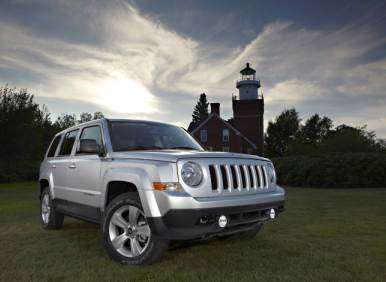
Today's new cars are better, faster, safer, and more capable than ever before.
With the advent of traction control systems, antiskid programming, antilock braking systems, and all-wheel drive the level of confidence with which the average driver can approach inclement conditions is higher than ever. However, none of these innovations can supplant the value of good judgment on the part of the driver. While they do make it possible to drive more safely, it is still incumbent upon the driver to take the situations imposed by changing road and weather conditions into consideration when they drive a car.
One of the most common of these situations is rainy weather.
Driving in the rain requires a considerable shift in the approach the driver takes to operating an automobile. Wet roads mean less traction and falling rain means limited visibility, for both you and for other drivers—as well as pedestrians. Therefore, it is extremely important to give yourself more time to respond to unforeseen occurrences.
What’s the best way to do this?
Read On…
How To Drive In The Rain: Driving Techniques
The best way to do this—first and foremost—is to slow down!
1. In fact, we can’t say this one often enough—just slow down! Because it takes longer to stop, or to respond to unexpected situations in wet weather, less speed equals more response time. And, more response time can be the difference between a mere fender bender and fatalities.
2. On multilane highways, try to stay in the middle lanes as much as possible. Roadways are crowned in the middle so water naturally drains to the edges of the roadway. Because large trucks and heavier vehicles spend so much time in the far right lanes, grooves develop and water tends to pool in those outside lanes. Therefore, your best traction will generally be found in the middle lanes
3. While the three-second rule is quite adequate on dry roads, on wet roads you'll want to extend that interval to five seconds or more. In order to do this, choose a fixed object up ahead of you on the side of the road. When the car in front of you passes it start counting; 1001, 1002, 1003, 1004, 1005. You should be passing that fixed object at 1005 if you have a five second buffer between you and the car ahead of you.
4. Maintaining the five-second rule also enables you to avoid using your brakes. Granted, this is less of a consideration with the advent of antilock braking systems—however it is still possible to make your car skid if you applying your brakes with too much force. By giving yourself more time, you can simply take your foot off the accelerator to slow down.

How To Drive In The Rain: Driving Techniques — Cont’d.
5. Observing a longer interval also enables you to avoid following tractor-trailers and buses too closely. These large vehicles create significant amounts of spray. All of this water in the air can make it difficult for you to see. Take particular care when passing them becomes necessary as well; make sure you can see a considerable distance up the road, and then execute the pass quickly and safely.
6. When driving in the rain, use the car ahead to dry a path on the street for you. To do this, simply drive in the tracks it leaves on the road surface. Driving this way provides you more traction because the water on the road has been cleared when you get there.
7. Visibility is considerably decreased in wet weather, so when driving in the rain, turn your headlights on to make it easier for other drivers to see you. This should be done even in a light rain, gloomy, foggy, or overcast conditions. Another benefit is they help you see the road too. BTW, you should still do this—even if your car is equipped with daytime running lights. Your taillights activate only when your headlights are switched on. Relying on your daytime running lights alone means you'll be driving without your taillights.
8. Confine your driving to pavement as much as possible. On unpaved roads you can easily become stuck, even in a four-wheel-drive SUV. Further, it is hard to judge the depth of puddles on muddy roads.
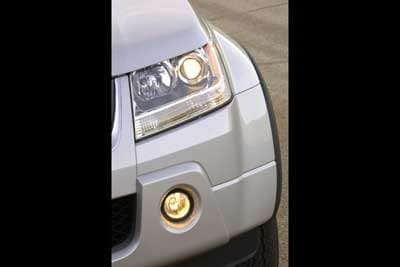
How To Drive In The Rain: Driving Techniques — Cont’d.
9. Be especially careful at night. The droplets of rain on your windshield can amplify the glare of oncoming headlights reflecting on the wet road’s surface. This can make it very difficult to see, and even be the cause of a temporary loss of visibility.
10. A solid rule of thumb is to absolutely avoid driving through moving water if the ground is not visible through it. Swiftly moving water in particular can contain a lot of energy. Enough energy in fact, to sweep your car along with it if the water is so deep your tires can't touch the ground.
11. Similarly, avoid driving through puddles if you cannot readily discern their depth. If you must drive through deep water, drive slowly and steadily to create a bow plane in front of your car to prevent water from getting into the engine. When you enter a puddle, pay considerable attention to its depth. If it appears to be deeper than the bottom of your doors, stop, reverse, turn around, and find another route. Deep water can stop your car and cause serious damage to its electrical system.
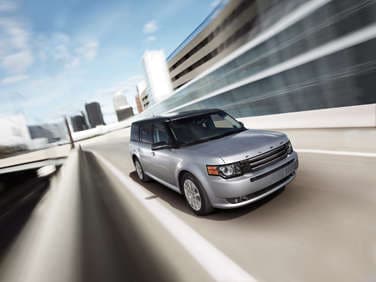
How To Drive In The Rain: Driving Techniques — Cont’d.
12. Keep an eye out for pedestrians; often they will dash across the street in the rain in an effort to get where they're going as quickly as possible. Sometimes they won't see a car because of the reduced visibility wet weather imposes. Similarly, out of common courtesy, try to avoid splashing pedestrians on the sidewalk as you drive past.
13. When the weather turns particularly nasty, say for example during heavy winds, thunderstorms, and lightning; avoid driving altogether whenever possible. These conditions make it particularly difficult to operate a vehicle safely.
1A. Once again—and we can't emphasize this point enough—the most important precaution you can take when driving in the rain is to slow down!

How To Drive In The Rain: Prepping Your Car
1. Because the margin of error is considerably decreased, the proper functioning of all of your primary controls becomes very important. Thus, one of the strongest precautions you can take is to ensure your automobile is always in good repair and tip-top condition.
2. Always make sure your headlights, taillights and turn signals function properly. Further, you want to make sure your steering, clutch, brake, and accelerator pedals respond well to your inputs. Make sure the rubber pads on your pedals are not worn, as this can make it easier for a wet shoe to slip. Speaking of shoes, always make it a point to dry your feet on the floor mats before interacting with the pedals.
3. The only thing connecting your car to the ground is your tires. On wet roads, worn tires can be a serious hazard. The grooves in your tires are designed to channel water away so your tires can grip the road. If your tires are worn smooth, you will not have that benefit and, it becomes much easier for your car to slide out of control. Similarly, extremely worn tires will actually float on the cushion of water created ahead of them as they roll down the street. This can significantly decrease your car's ability to respond to steering inputs. It can also make it more difficult to stop. Driving with bald tires on a wet road is basically asking for trouble.
4. Just as your tires are the only things connecting you to the ground, two of the most significant things ensuring your outward visibility are your windshield wipers. Always check them regularly to make sure they are soft and pliable and the blades are sharp enough to clear water from your windshield effectively. You should also make sure your windshield washer fluid reservoir is always full. Sometimes, when it rains lightly, you'll need the additional liquid to help clear your windshield more effectively.
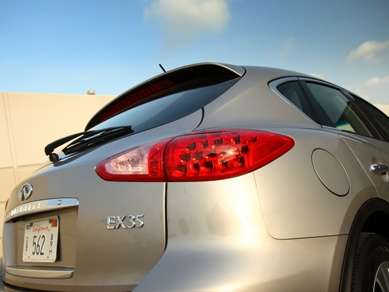
How To Drive In The Rain: Prepping Your Car — Cont’d.
5. It is impossible to overstate the importance of your headlights and your taillights in rainy weather. Often, they can be the only means by which your car is visible to other motorists and pedestrians. Remember, visibility is significantly decreased in rainy conditions. Anything you can do to make yourself more visible to others will go a long way toward ensuring your safety. Nothing works better for this than your headlights and your taillights.
6. Believe it or not, even when it's cold outside, it could be necessary to use your air conditioning when driving in the rain. Air conditioning works to cool the interior of the car by removing excess humidity from the passenger compartment. Interestingly, excess humidity is also exactly what causes your windows to fog in rainy conditions. Activating the air conditioning system removes the humidity and clears your windows. Most modern cars activate the air conditioning system automatically when you press the windshield defogger button. Therefore, it is very important to make sure your air conditioning system is in good working order.
7. Keeping the inside of your windows clean will make them less susceptible to fogging in the first place. Washing your car regularly and cleaning your windows actually performs a safety function.
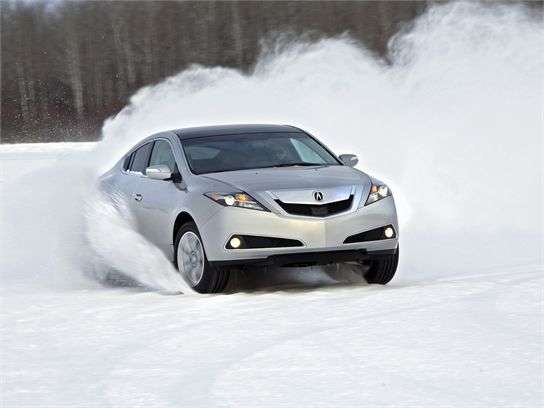
How To Drive In The Rain: Other Considerations
1. The first few hours of driving in the rain are actually the most dangerous—particularly if it is the first time it has rained in quite some time. As cars drive over the pavement, oils secrete from them, rubber wears off their tires, and the roads become polished and smooth. Add water to this mix, and suddenly you’ll have very slippery conditions.
All of these materials float on the accumulation of water when rain begins. This mixture significantly decreases the coefficient of friction your tires have to work with and makes them considerably more likely to slide if sudden changes of direction are called for—or if forceful emergency braking is required.
3. Skids also become much more likely in these conditions. It is important to know how to safely correct a skid in order to avoid an accident. If you are driving around a curve and the rear of your car starts to skid out of the curve, turn your steering wheel in the direction the rear of the car is traveling to straighten it out. If you do the opposite, and turn your steering wheel counter to the direction the rear of the car is traveling you will actually make the skid worse.
4. From time to time, when driving in the rain, tap your brakes lightly to make sure they are still working. The water, oil, and rubber dust mixture can get between your brake pads and your rotors and make it more difficult for your car to stop. By lightly tapping the brakes from time to time you remove this mixture from your braking system so your car will be ready to stop immediately should a situation arise. The more sophisticated luxury and high performance cars do this automatically. To find out if your car is one of them, read your car’s owner's manual section dedicated to the braking system.
5. And last, but certainly not least—SLOW DOWN !!!
